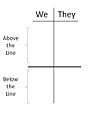
All News
TALES OF AKARANA

“SWISS RUBBER”
Welcome back to 2018. Akarana has welcomed the first month of the year with something a little different, a 3 night “Swiss Rubber” competition. Each night pairs play 2 x 14 board matches with Rubber Bridge rules (along the style of the National Rubber Bridge competition, except that being Akarana, there were no system restrictions).
At the end of each match, the winning pair received three points while bonus points were given if the winning margin was 1,000 + (I point), 2,000 + (2 points) and 3,000+ (3 points). Any pair who lost by less than 1,000 received 1 bonus point.
As this was Rubber, there was hand dealing at each table though to create perhaps a fairer event (do fairness and Rubber really go together?) and more interesting discussion for the post mortems, the boards were passed from table to table, duplicate style. Although the dealers were as per the boards, the vulnerability was determined by the state of the rubber. As I said, something different.
The Swiss element came from the points ladder from where one’s next opponents were determined Swiss style.
Seven tables, thus, all playing the same boards. In the first match, North-South were not without honour cards (yes, “honours”, of course, could be claimed.) but largely proved unable to make any contracts with East-West winning margins ranging from 580 (well done that North –South pair) to 2030. It paid to sit East-West in Match 2 where East-West pairs scored as much as 3910.
Rubber creates situations very different from Duplicate Bridge. With your side game and 60 on, what does this 3![]() bid mean?
bid mean?
West North East South
1![]() Pass
Pass
1![]() Pass 2NT Pass
Pass 2NT Pass
3![]()
In Duplicate, it would normally be a slam try as fast arrival suggests West would bid 4![]() with a minimum hand and 6 spades. However, East passed with there being no need to bid more to secure Rubber. South then emerged with 4
with a minimum hand and 6 spades. However, East passed with there being no need to bid more to secure Rubber. South then emerged with 4![]() and West’s double indicated they had something in reserve:
and West’s double indicated they had something in reserve:
| North Deals None Vul |
|
||||||||||||||||||||||||||||||
|
|
|
|||||||||||||||||||||||||||||
|
|||||||||||||||||||||||||||||||
Sacrificing at Rubber is risky. Conceding a large penalty may keep the Rubber going but those points lost remain above the line and may not look good for the pair conceding at the end of the Rubber. East-West had missed slam but the +800 (should be 1100) penalty was still a reasonable return from the board. West should have at least changed the suit or used a forcing 3![]() with slam interest. Then, when East shows spade preference or three card spade support, West can raise to the 4 level as a slam try.
with slam interest. Then, when East shows spade preference or three card spade support, West can raise to the 4 level as a slam try.
Whoever said hand dealt hands were boring? What would you lead as West to the following auction:
| East Deals None Vul |
|||||||||||||||||||||||
|
|
|
|||||||||||||||||||||
| West | North | East | South |
| 4 ♦ | 4 ♠ | ||
| 5 ♦ | 5 ♠ | Pass | Pass |
| Dbl | All pass |
(E/W +40)
It seems almost guaranteed that a diamond lead will get ruffed. You must be counting on two trump tricks but would want to avoid being end-played. A club lead would have avoided the end-play though this time, even a diamond lead works for your side… and the heart lead would be fine too:
| East Deals None Vul |
|
||||||||||||||||||||||||||||||
|
|
|
|||||||||||||||||||||||||||||
|
|||||||||||||||||||||||||||||||
| West | North | East | South |
| 4 ♦ | 4 ♠ | ||
| 5 ♦ | 5 ♠ | Pass | Pass |
| Dbl | All pass |
If West had been unsure of beating 5![]() , then the 6
, then the 6![]() dive ought to have been very cheap as East would surely have had “100 honours”. As you can see, that was not the case,with the jack the only card miissing.
dive ought to have been very cheap as East would surely have had “100 honours”. As you can see, that was not the case,with the jack the only card miissing.
After the diamond lead, declarer crossed to dummy with a club to play trumps. West cashed their spades and had to exit a heart but there was still one heart trick for the defence. On an initial heart lead, if declarer wins and plays a club to dummy and then ruffs the diamond before exiting a trump, only the heart ruff saves West from being end-played.
Let’s keep hand shuffling. This was fun.
Richard Solomon
Go Back View All News Items
